Cambridge time expert fears sundials are 'old hat'
- Published
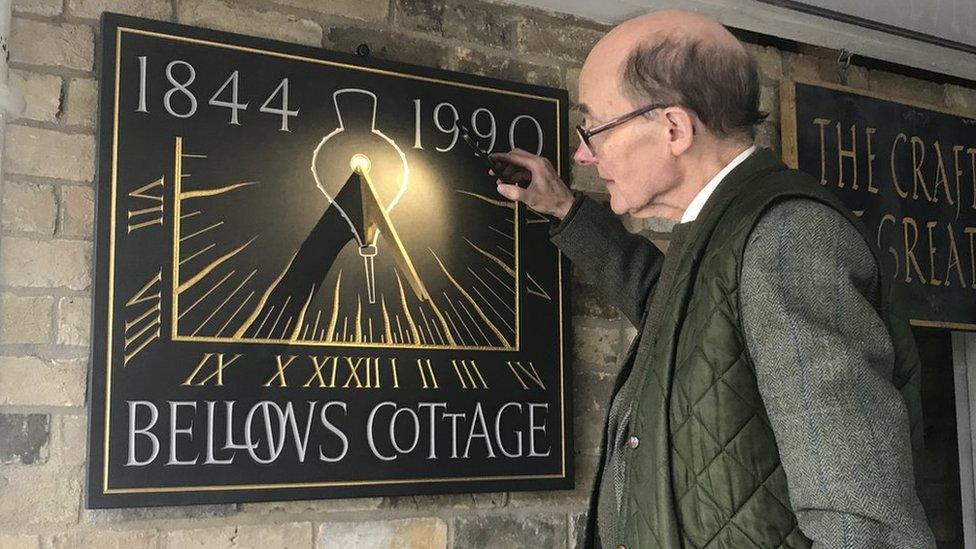
Dr King has designed dozens of sundials around the world
A self-confessed "time enthusiast" says getting young people to love sundials is an "uphill struggle".
Dr Frank King, a Cambridge academic, is the mathematical brain behind some of the country's most striking timepieces.
The 76-year-old, who is also chair of the British Sundial Society, calculates precise measurements which are then constructed in a workshop.
He says the number of people who "really understand" the science behind them "are few and far between".

The Selwyn College 'nobus' shadow falls between four and five hours (marked in gold) after sunrise - so it's almost midday
A Fellow in Computer Science at Churchill College, Dr King has taught the likes of £100m donor David Harding and Raspberry Pi founder Eben Upton, but also admits to having an "obsession with time".
"Anything from atomic clocks to the most ancient of sundials I can tell you about," he says.
As Keeper of the Clock, he is responsible for Cambridge University's official timepiece on Great St Mary's Church.
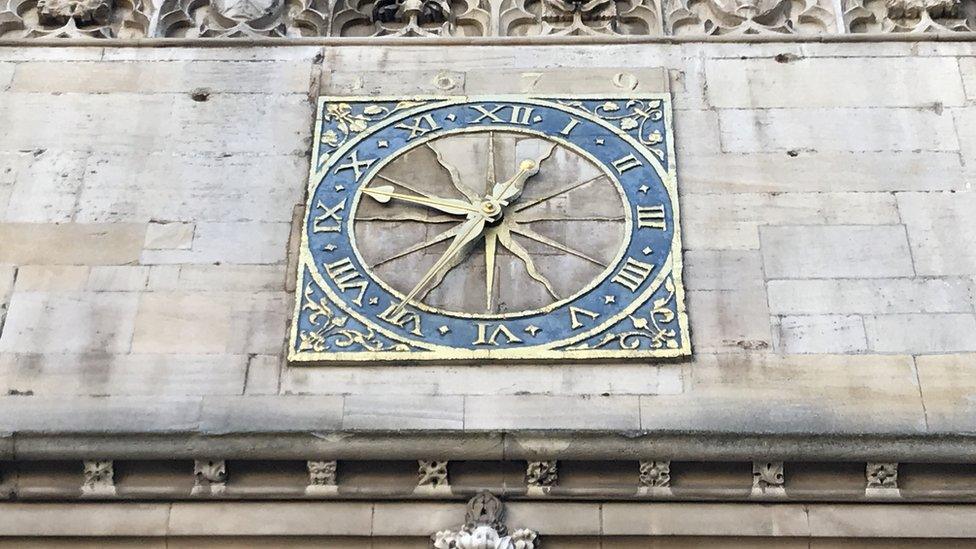
Cambridge University's official clock is above the west door of Great St Mary's Church
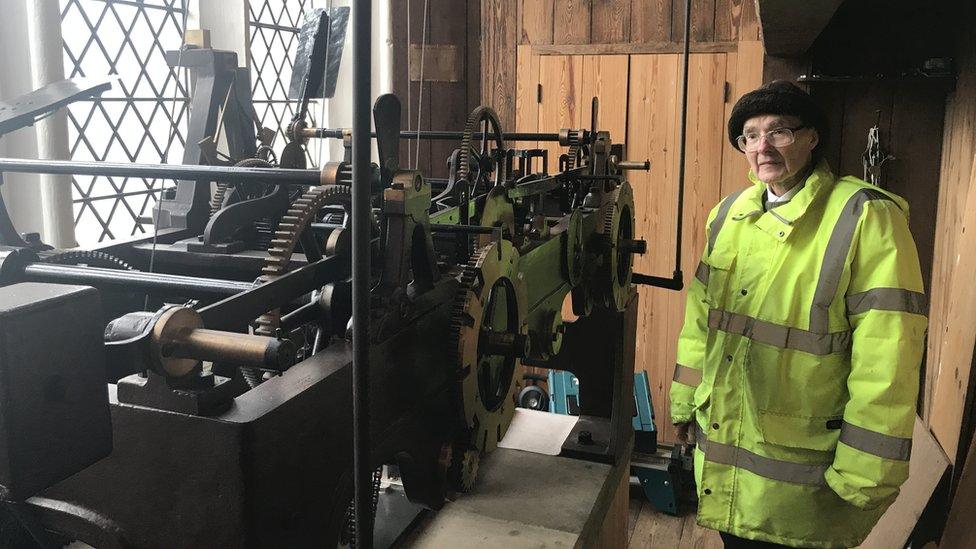
Dr King is responsible for the upkeep of the clock mechanism as Keeper of the Clock
But it is the future of his passion that concerns him.
"Sundials are old hat," he says. "Those few people who are making innovative sundials are making extensive use of computerised tools to design them - that's a good thing.
"To get young people interested in sundials is extraordinarily challenging."

How do sundials work?
A sundial uses a shadow cast by a thin rod called a gnomon on to a flat surface etched with different times.
The latitude and gradient are taken into account to decide the precise location, ideally on a south-facing wall.
Its accuracy varies according to the time of year, and the amount of sunlight in a day.


Dr King's sundial on the Bath Stone wall of Pembroke College, Cambridge, gives a time of nearly 12:30
Lida Kindersley has created more than 20 of his designs in her Cambridge workshop.
"His work is alchemy," she said. "I am totally in awe of him.
"Sundials position us in the universe, in the vast unknown.
"I know when we make a sundial it's going to be right."
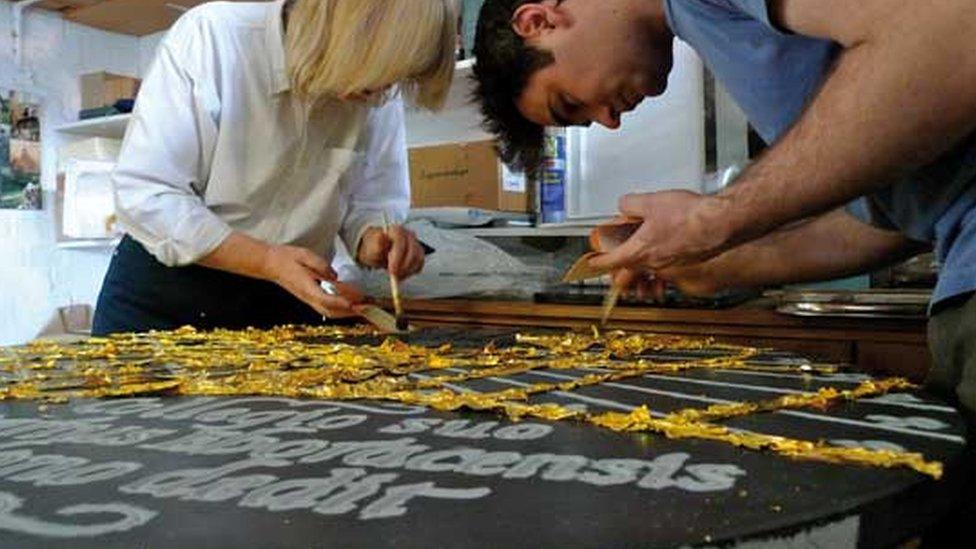
Lida Kindersley working on the production of the Selwyn College sundial at her Cambridge workshop
Dr King strongly believes the sundial - "the perfect collaboration of science and art" - has a place in the digital age.
But he is concerned that the skills needed to create them may dwindle, and believes education could play a greater role.
"There seems to be no teaching of spherical triangles, and very little teaching of solid geometry.
"How many school leavers have heard of Euclid?"

The Noon Mark on the London Stock Exchange recognises 29 February in leap years
- Published18 November 2018
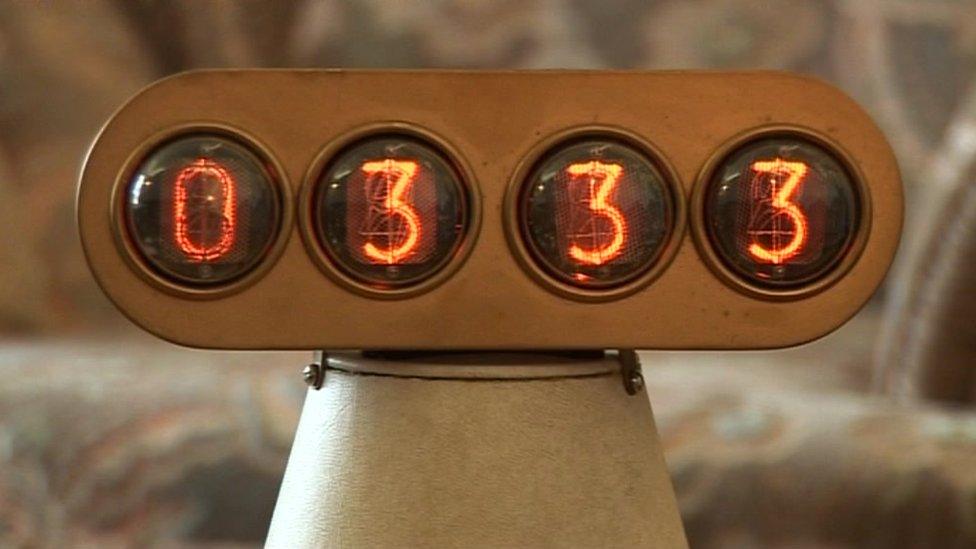
- Published8 November 2017
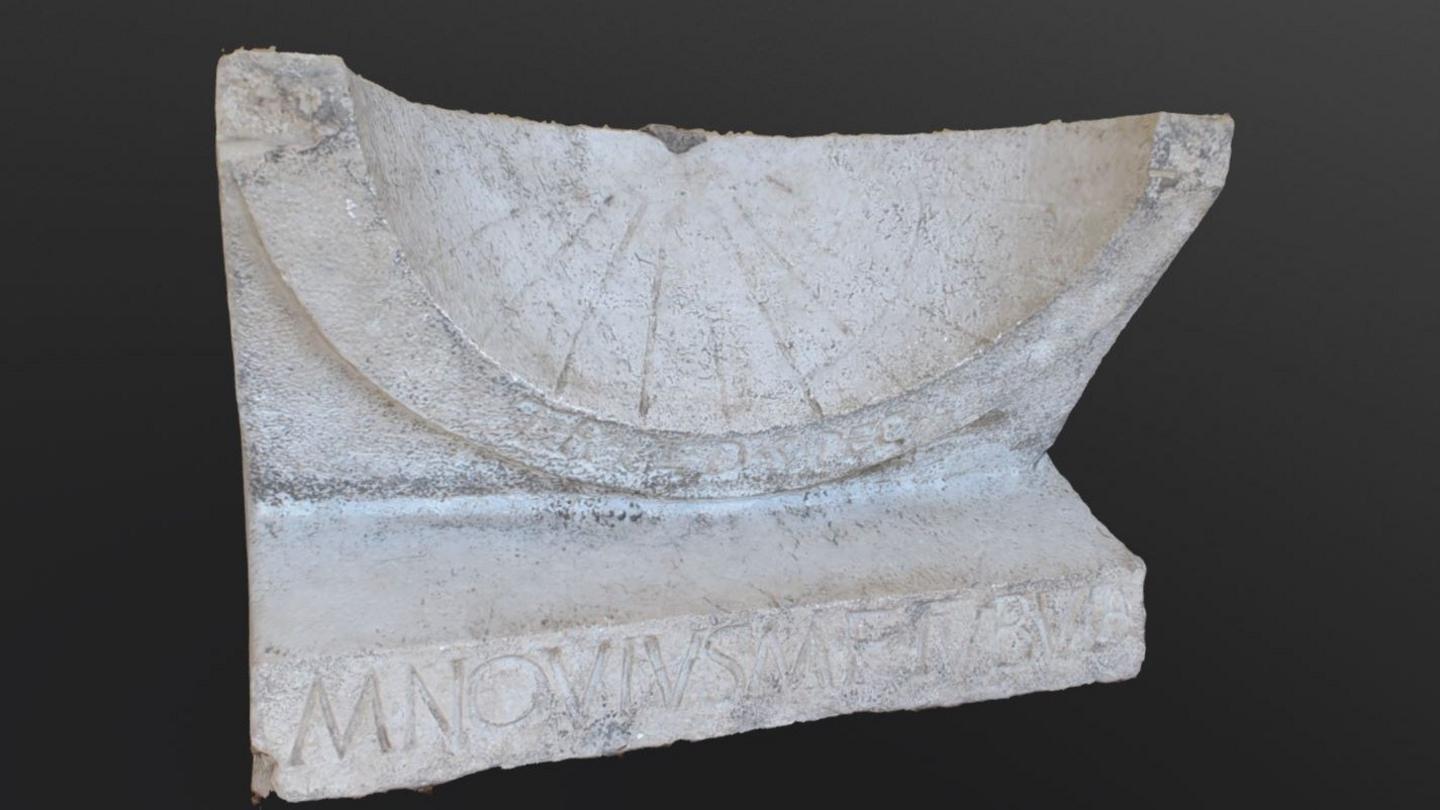
- Published7 January 2014